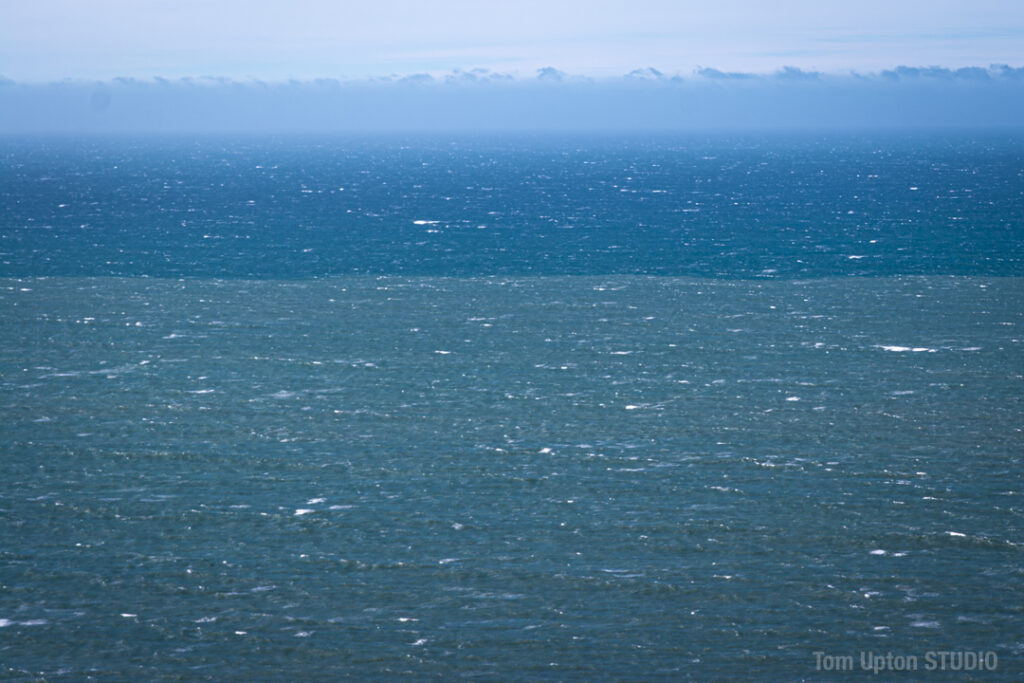
Marine Layer Oregon Coast 2007
The Zen of Photography: Cultivating Presence
Zen in photography is about being fully present, mindful, and unburdened by external distractions or internal daily noise. It’s about seeing, not just looking, and allowing your camera to be an extension of your intention. This takes work.
1. Master Your camera to Forget it.
This is paramount. The very functions of mirrorless cameras – live exposure preview, advanced AF, IBIS, custom buttons, and intuitive menus – are *designed* to make the technical aspect disappear.
Practice, Practice, Practice.
Become so familiar with your camera’s controls (aperture, shutter speed, ISO, white balance, focus modes) that adjusting them becomes muscle memory. An extension of your body’s visual organs. You want to reach a point where you’re not ~thinking~about how to change the aperture; you’re just *doing* it as an instinctive response to the light and your subject.
Customize Your Camera:
Mirrorless cameras offer extensive customization; as you get your Sea-Legs, so to speak, go at this slowly and do some research as to how others may do this. Program your custom buttons for frequently used functions (e.g., ISO, AF mode, white balance). Set up custom shooting modes for different scenarios (e.g., a “landscape” mode with a deep depth of field and low ISO, an”action” mode with a fast shutter and continuous focus: AF-C). With a push of a Fn button this zaps menu distraction disorder and keeps you in the moment.
Embrace the EVF/Live View:
Editors note~This one is a bit of a stretch for me but…it is just training wheels; if not a hack. Eventually you want to turn off the exposure preview function and get closer to your scene at hand without the cluttered nuances of light and dark as expressed by your display (unreliable precision, and ultimately irrelevant). You have a metering scale in your viewfinder, use that! My 2¢~TEU
This is where mirrorless camera exposure preview feature can helpmindfulness for the neophyte. The live exposure preview allows you to see the “effect” (as the display gets brighter and/or darker as you dial the shutter and/or aperture) of your settings on exposure,before you press the shutter. Instead of trial and error, it’s a real-time tonal range dialogue with the scene. Use it to dial in your “optimum” exposure setting, and bracket. This gets you used to how the Tango Dance of Exposure is done between Aperture and Shutter; and how their luminant intimacy is connected. Your meter is guessing and you need to be your meter’s Spirit Guide. You have one third stop increments here for Christ’s Sake. Amen. 🙏
2. Slow Down and Observe (Pre-Visualization):
Before you even raise the camera to your eye, engage your senses.
Mindful Observation:
Spend time simply observing the scene. What draws your eye? What is the quality of light? How are colors interacting? Where are the interesting textures or lines? What is the mood? This is where the initial spark for your “artful qualities” begins. And include your other senses as well for a bit of synesthesia. You will remember this when you see the photo again in editing.
Pre-visualize the Outcome:
Instead of just reacting, try to envision the final image you want to create. How do you want the colors to feel? What exposure will convey the mood? What will the shutter do to the image? What will the aperture do to the image? This mental exercise guides your technical adjustments. This gets easier as you shoot and review more frequently.
3.Simplify Your Gear:
When appropriate. But DO do this. While mirrorless cameras are feature-rich, sometimes limiting yourself can deepen your experience with your favorite subjects.
One Lens, One Camera:
For a mindful walk, de-zoom, try taking just one prime lens. This forces you to move your body and think creatively about composition, rather than relying on the convenience of zoom. It simplifies your decision-making and allows you to deeply explore the possibilities within that single focal length.
Minimal Setup:
Don’t overload yourself with gear. A lighter setup allows for more freedom of movement and less distraction. Lowe Pro, Pro Runner 200 AW*. Best camera bag ever made.
4. Disconnect from the Outcome:
Zen is about the process, not just the result.
Let Go of Perfectionism:
Don’t chase the “perfect” shot, engage the joy of discovery and creation in the moment. Accept imperfections as part of the process. Get high if needed.
(TU 2¢) ALSO disregard the media-populist view of “good is better than perfect” PLEASE, this is a judgement call rife with expectation and busyness. The key word here is Let Go, just as you do when you meditate. I think this brings us to 4c ~TEU)
Avoid Spray and Pray:
You have heard the adage…
Instead of firing off dozens of shots, be intentional. Each press of the shutter becomes a deliberate act, so breathe in and out if you need to slow down prior to release. Think of it as foreplay. An act of Love. This fosters a deeper connection to each image you create.
Minimize ‘Chimping’ (Reviewing):
There are 2 modes for this reviewing process.
Avoid this one;
While the mirrorless screen is invaluable for live preview, constantly reviewing shots after you’ve taken them pulls you out of the moment. Trust your live preview and your intuition. Review your photos later, in Lightroom, as a separate, reflective exercise.
This one is helpful:
Do shoot and review versions as you set up a portrait to get the sweet spot exposure and stick with it. Reviewing the histogram and blinkies is good but not during the flow of portraiture. Get this done before you shoot.